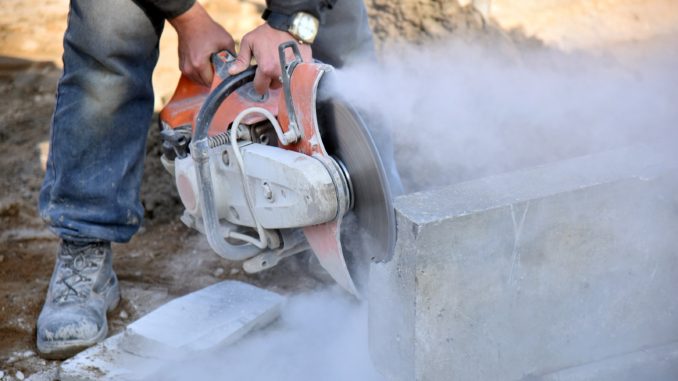
By Bob Benkesser
Yesterday SafeWork Australia met to discuss reducing the safe standard workplace exposure to silica dust from 0.1 mg per cubic metre to 0.02 mg per cubic metre.
This is in response to the growing awareness of the dangers of silica and the increased use of silica based stone products in household and commercial construction.
CFMEU WA commend all involved in considering this issue. But it’s a sad indictment on our industrial culture that we’re even talking about ‘safe’ exposure levels. More exposure does mean higher risk. But, just like asbestos, any exposure can cause damage.
So here are the real questions that need to be asked about exposure to silica dust.
Who’ll monitor it? Who’ll enforce it? Who’ll go in to worksites unannounced and test levels of silica dust? What powers will they have? Is there any plan to ban high risk products? What resources will they be given to make sure they can adequately cover worksites across the state? What will the penalties be for breaching the limits? Will employers and company directors ever be meaningfully held to account?
The current standard is set to 0.1 mg per cubic metre. We see circumstances every day that clearly exceed that. We intervene whenever and wherever we see it. But is any organisation currently funded and empowered to enforce the existing standard, let alone the new one?
Has anyone anywhere in Australia ever been prosecuted for exposing workers to Silica dust? Ever?
Unless there are meaningful answers to these questions then the bar can be set anywhere and it won’t make the slightest bit of difference to the health and wellbeing of workers.
Have we not learned anything from the past? Asbestos killed people and we banned it, what are we going to do to prevent the silica epidemic that is coming.
We need to make health and safety regulators powerful forces that halt this ‘self-regulation’ that allows the building industry to use products that exploit and kill people in the name of bigger profit margins.
Look at current issues raising their ugly heads, non-compliant flammable panels, asbestos containing materials, silica containing materials.
Look at who profits and who suffers?
There are so many existing limits and laws to protect health, safety, and working conditions that are broken every single day. If no organisation has authority or resources to enforce the standard and prosecute managers and directors of companies that breach them then what’s the point?
Really. What’s the point?
Here are some quotes from a worker in the stone industry.
“There are a lot of cowboys in the housing construction and renovation industry.”
”I’ve seen guys that have tried to seek medical attention and they get sacked.”
“In my last job the boss handed me a paper face mask as protection when either a cartage face mask or an oxygenated suit are required when exposed to silica dust.”
“Doing on-site installations when the measurements are wrong, benchtops are not sent back to be recut, it’s dry cut on-site with little or no ventilation.”
“I’d leave those jobs covered in dust and of course the home or businesses covered as well.”
“Now that I know about these risks, I worry for mates I’ve worked with and customers as well.”
“Dry cutting is happening every day on site, and customers need to be aware that if you want to change your sink or hot plate with a bigger one in years to come it will be dry cut in your home unless you remove the whole kitchen top.”
Will changing the ‘standard’ for exposure from 0.1 to 0.02 mg make any difference whatsoever to the working environment this worker describes?
No. Not one bit.
We welcome that people are discussing this issue, studying the effects and identifying proper limits. That’s to be commended and CFMEU WA are a keen and active participant in that process.
But there is one thing right now that would eclipses everything else in protecting the health, safety and dignity of workers. It would be effective across all jobs, all worksite, all industries and all industrial hazards.
Prison for employers.
When any employer, anywhere, knows that they can go to prison for exposing workers to danger then the game immediately changes. They stop thinking about the ‘minimum protection required’ and start thinking about the ‘maximum protection available’.
Until then the cost of fines or penalties for breaches will remain just one more column on a spreadsheet when people work out the most profitable path.
That’s what Wittenoom taught anyone who had their eyes open. The employers knew the dangers. They knew they were killing people. They even knew they were exposed to litigation as a result. But they ran the numbers and decided on the most profitable path.
So who’ll monitor it? Who’ll enforce it? And most importantly, what penalties will there be for managers and company directors who don’t comply?
Because if the cost of defending litigation is less than the cost of compliance, then the decision’s been made. Companies will once again take the maximum profits while workers pay the ultimate price. Just as it’s always been.
Bob Benkesser is the Senior Safety Officer for CFMEU Construction & General WA
